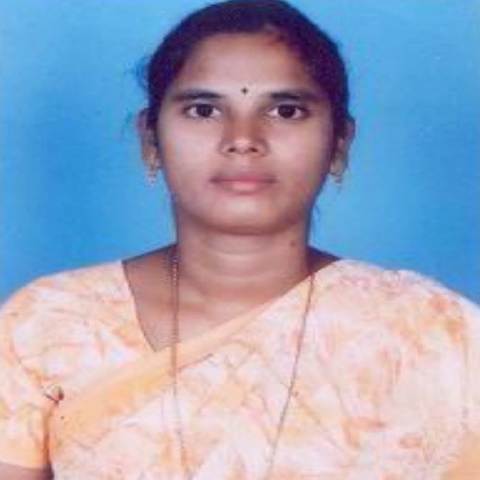
D. Haritha
Work place: University college of Engineering, Jawaharlal Nehru Technological University Kakinada, Kakinada
E-mail: harithadasari9@yahoo.com
Website:
Research Interests: Image Processing, Data Structures and Algorithms, Data Structures
Biography
Haritha is Assistant Professor in Computer science and Engineering Department at Jawaharlal Nehru Technological University Kakinada. She has 12+ years of experience. She guided 30 M.Tech students and 15 MCA students for their project. Her research interest is on image processing, Data structures and networking. She published 4 research papers in international journals. She published 3 research papers in international conferences.
Author Articles
Optimization of Process Parameters Using Grey-Taguchi Method for Software Effort Estimation of Software Project
DOI: https://doi.org/10.5815/ijigsp.2018.09.02, Pub. Date: 8 Sep. 2018
Optimization is one of the techniques used in the estimation of projects to obtain the optimal parameter sequence at different levels for the best project conditions, such as size, duration and function points. In this paper, to select the significant process parameter sequence at different levels, a combination of Grey Relational Analysis (GRA) and Taguchi method applied during the estimation. This parameter sequence is essential for the industries in producing quality product at a lower cost. Taguchi method is used to improve the product quality and reduce the cost. Among the various methods of Taguchi as a standard Orthogonal Array (OA) produces better parameters to be considered at different levels. This paper uses L16 Orthogonal Array (OA) whose efficiency is proven in the experimental results. Here, a variant of GRA, GRG has been used to assign grades for projects in the dataset. Finally, the optimized process parameter sequence at different levels is obtained through the application of GRG over L16 Orthogonal Array (OA). In this paper, Grey-Taguchi method is implemented to find out the levels of software process parameters such as Duration, KSLOC, Adjustment Function Points and Raw Function Points necessary for minimizing software effort. Experimental results show that parameter levels suggested by Grey-Taguchi method result in improved GRG, which results in better software effort estimation.
[...] Read more.Software Effort Estimation Using Grey Relational Analysis
DOI: https://doi.org/10.5815/ijitcs.2017.05.07, Pub. Date: 8 May 2017
Software effort estimation is the process of predicting the number of persons required to build a software system. Effort estimation is calculated in terms of person per month for the completion of a project. If any new project is launched into a market or in industry, then cost and effort of a new project will be estimated. In this context, a number of models have been proposed to construct the effort and cost estimation. Accurate software effort estimation is a challenge within the software industry. In this paper we propose a novel method, Grey Relational Analysis (GRA) to estimate the effort of a particular project. To estimate the effort of a project, traditional methods have been used as algorithmic models to evaluate the parameters of the basic model i.e. basic COCOMO model. In this paper, to show the minimum error rate we have used Grey Relational Analysis (GRA) to predict the effort estimation on Kemerer dataset. When compared to the traditional techniques for estimation, the proposed method proved better results. The efficiency of the proposed system is illustrated through experimental results.
[...] Read more.Face Recognition System Using Doubly Truncated Multivariate Gaussian Mixture Model and DCT Coefficients Under Logarithm Domain
By D. Haritha K Srinivasa Rao Ch. Satyanarayana
DOI: https://doi.org/10.5815/ijigsp.2012.10.02, Pub. Date: 28 Sep. 2012
In this paper, we introduce a face recognition algorithm based on doubly truncated multivariate Gaussian mixture model with DCT under logarithm domain. In face recognition, the face image is subject to the variation of illumination. The effect of illumination cannot be avoided by mere consideration of DCT coefficients as feature vector. The illumination effect can be minimized by utilizing DCT coefficients under logarithm domain and discarding sum of the DCT coefficients which represents the illumination in the face image. Here, it is assumed that the DCT coefficients under logarithm domain after adjusting the illumination follow a doubly truncated multivariate Gaussian mixture model. The truncation on the feature vector has a significant influence in improving the recognition rate of the system using EM algorithm with K-means or hierarchical clustering, the model parameters are estimated. A face recognition system is developed under Bayesian frame using maximum likelihood. The performance of the system is demonstrated by using the databases namely, JNTUK and Yale and comparing it’s performance with the face recognition system based on GMM. It is observed that the proposed face recognition system outperforms the existing systems.
[...] Read more.Other Articles
Subscribe to receive issue release notifications and newsletters from MECS Press journals